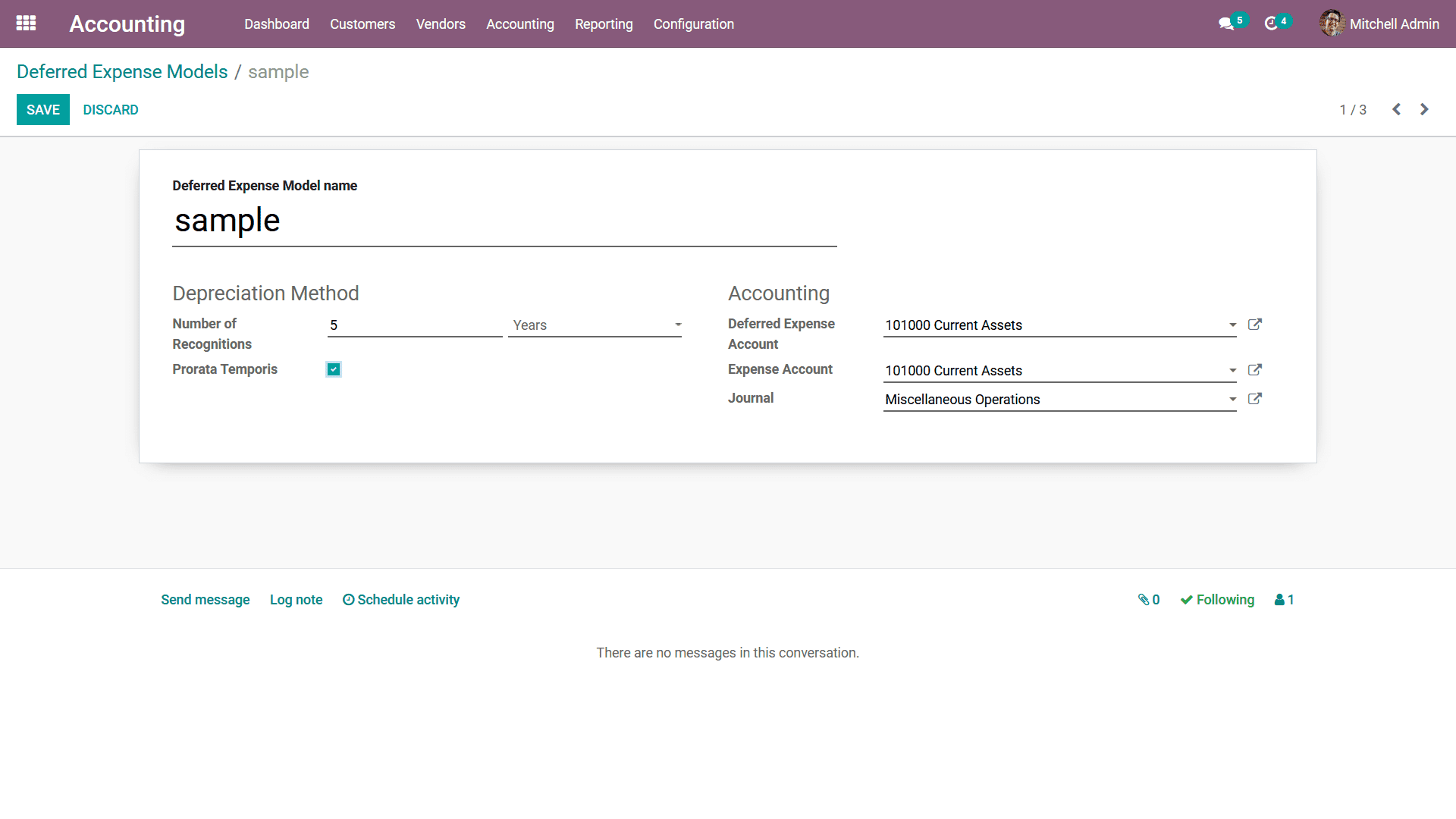Deferred Expense Models
Another management tool in the Odoo Accounting module is the Deferred Expense Models
which describe the expense aspects of the subscription-based products. As defined
in the section of Deferred Revenue Models where the Deferred Revenue is connected
with the aspects of the payment generated by the customers ahead of the product
being delivered, which is mostly associated with the subscription-based products
that are being defined. Here the Different Expenses will describe the expenses on
the subscription-based products and services which are purchased for the various
vendors.
The dedicated Deferred Expense Model menu can be accessed from the Configuration
tab of the Accounting module where all the Deferred Expense Models are being defined.
The Account Type of Deferred Expense Account will be current assets. Even though
the company paid the amount for some services and for the ones which are not obtained
and basically the paid amount creates expense. But as the payment is done for service
and certain of them are yet to be delivered so in that case that deferred expense
will be an asset for the company. And each year the asset will be reduced as the
service is received. This will be recorded in the Asset section of the Balance Sheet.
Here the Expense Name, Deferred Expense Account, Expense Account, the Number of
Recognitions, and Period Length will be defined. You will also have the custom as
well as default filtering and group by tools available.

To create a new Deferred Expense Model, you can select the Create button which will
take you to the Deferred Expense Model creation window as depicted in the following
screenshot. In the creation window, the model Name can be provided and under the
Depreciation Method tab, the Number of Recognitions in years or months can be described.
Upon enabling the Prorata Temporis the Depreciation will start from the day the
Deferred Expense Model is being defined. The Accounting details of the Deferred
Expense Model such as the Deferred Expense Account, the Expense Account as well
as the Journal can be described.

The number of followers of the Deferred Expense Model will be described in the creation
window and you can add followers as well as attachments to the documents related
to it. In case you want to schedule an activity with the followers of the respective
Deferred Expense Model which can be based on a calendar that is being defined. There
is a provision to Send messages and define the Log note for the Deferred Expense
Model furthermore, all the Log entries concerning the model will be depicted over
here. As we are clear on the Deferred Expense Models of the Odoo Accounting module
let's now move on to the next section where the Cash Roundings configurations are
described.